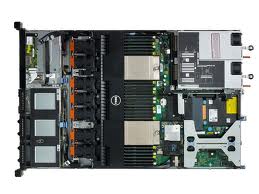
Cray Adds GPU Powerhouse to CS Supercomputer Lot
August 26, 2014
The CS family of Cray systems was graced with a new addition today with the arrival of a dense, memory-loaded GPU offering that adds big acceleration to select Read more…

Dell Measures ‘Ivy Bridge’ Server’s Performance Edge
November 12, 2013
Since Intel introduced its Xeon Processor E5-2600 v2 product family (code named “Ivy Bridge-EP”) in September, system makers, application specialists and ot Read more…

Swiss Research House Outfits Cray XC30 with GPU Boosters
September 11, 2013
The Swiss National Supercomputing Centre (CSCS) is rolling out the second half of its Cray XC30 supercomputer, the first to employ both Intel Xeon processors and NVIDA GPUs. Read more…

IBM Dials Up Density for HPC and Hyperscale
September 11, 2013
Today IBM announced NextScale, which will eventually evolve into the place of its iDataPlex systems. Tapping the power of the new Ivy Bridge processors, coupled with eventual support for a host of accelerated options (GPUs, Xeon Phi and likely other processor choices) the company also put its stake in the ground for hyperscale and HPC.. Read more…

Full Details Uncovered on Chinese Top Supercomputer
June 2, 2013
With help from a draft report from Jack Dongarra of the University of Tennessee and Oak Ridge National Laboratory, who also spearheads the process of verifying the top of the pack super, we are able to share the full processor, Xeon Phi coprocessor, custom interconnect, storage and memory, as well as power and cooling information. The supercomputer out of China will be... Read more…

NREL’s Supercomputer Debuts New Technology
March 13, 2013
The DOE's National Renewable Energy Laboratory (NREL) has just completed construction on a state-of-the-art datacenter in preparation for a brand new supercomputer. The high-efficiency 1-petaflops system features the latest servers from HP, including a proprietary direct-to-chip cooling system. NREL has already taken delivery of an initial 200-teraflops machine, and expects the system to reach full capacity this summer. Read more…

Intel Prepping 22nm CPUs for Spring Lift-Off
October 24, 2011
Next-gen Ivy Bridge processors likely to appear in March 2012. Read more…

The Weekly Top Five – 05/05/2011
May 5, 2011
The Weekly Top Five features the five biggest HPC stories of the week, condensed for your reading pleasure. This week, we cover ISRO's newest supercomputer; Tokyo Tech's selection of EM Photonics' CULA library; Intel's 3-D transistor breakthrough; the latest LSF Tools from Platform Computing; and SciNet's new NextIO GPU-based system. Read more…

- Click Here for More Headlines

Whitepaper
Transforming Industrial and Automotive Manufacturing
In this era, expansion in digital infrastructure capacity is inevitable. Parallel to this, climate change consciousness is also rising, making sustainability a mandatory part of the organization’s functioning. As computing workloads such as AI and HPC continue to surge, so does the energy consumption, posing environmental woes. IT departments within organizations have a crucial role in combating this challenge. They can significantly drive sustainable practices by influencing newer technologies and process adoption that aid in mitigating the effects of climate change.
While buying more sustainable IT solutions is an option, partnering with IT solutions providers, such and Lenovo and Intel, who are committed to sustainability and aiding customers in executing sustainability strategies is likely to be more impactful.
Learn how Lenovo and Intel, through their partnership, are strongly positioned to address this need with their innovations driving energy efficiency and environmental stewardship.
Download Now
Sponsored by Lenovo
Whitepaper
How Direct Liquid Cooling Improves Data Center Energy Efficiency
Data centers are experiencing increasing power consumption, space constraints and cooling demands due to the unprecedented computing power required by today’s chips and servers. HVAC cooling systems consume approximately 40% of a data center’s electricity. These systems traditionally use air conditioning, air handling and fans to cool the data center facility and IT equipment, ultimately resulting in high energy consumption and high carbon emissions. Data centers are moving to direct liquid cooled (DLC) systems to improve cooling efficiency thus lowering their PUE, operating expenses (OPEX) and carbon footprint.
This paper describes how CoolIT Systems (CoolIT) meets the need for improved energy efficiency in data centers and includes case studies that show how CoolIT’s DLC solutions improve energy efficiency, increase rack density, lower OPEX, and enable sustainability programs. CoolIT is the global market and innovation leader in scalable DLC solutions for the world’s most demanding computing environments. CoolIT’s end-to-end solutions meet the rising demand in cooling and the rising demand for energy efficiency.
Download Now
Sponsored by CoolIT
Advanced Scale Career Development & Workforce Enhancement Center
Featured Advanced Scale Jobs:
HPCwire Resource Library
HPCwire Product Showcase
© 2024 HPCwire. All Rights Reserved. A Tabor Communications Publication
HPCwire is a registered trademark of Tabor Communications, Inc. Use of this site is governed by our Terms of Use and Privacy Policy.
Reproduction in whole or in part in any form or medium without express written permission of Tabor Communications, Inc. is prohibited.
























